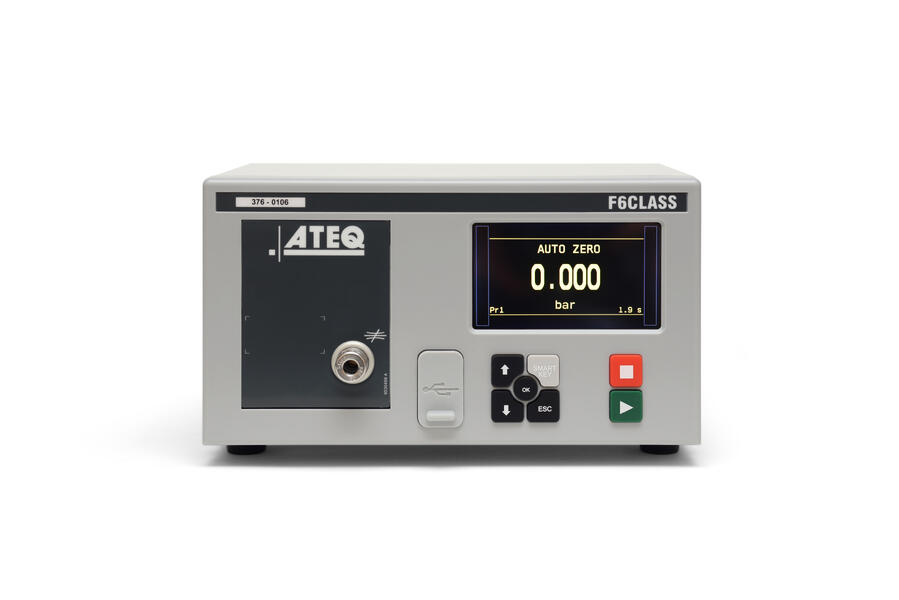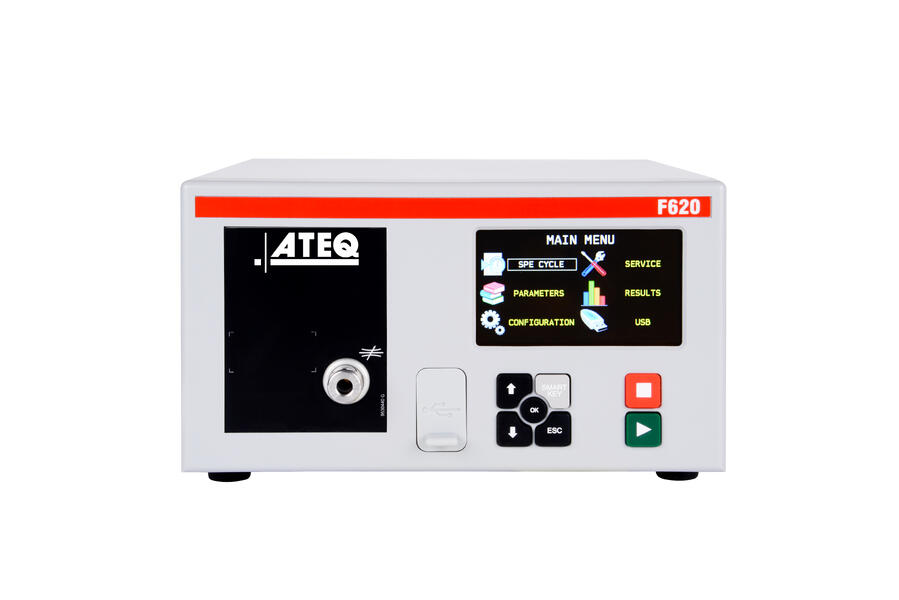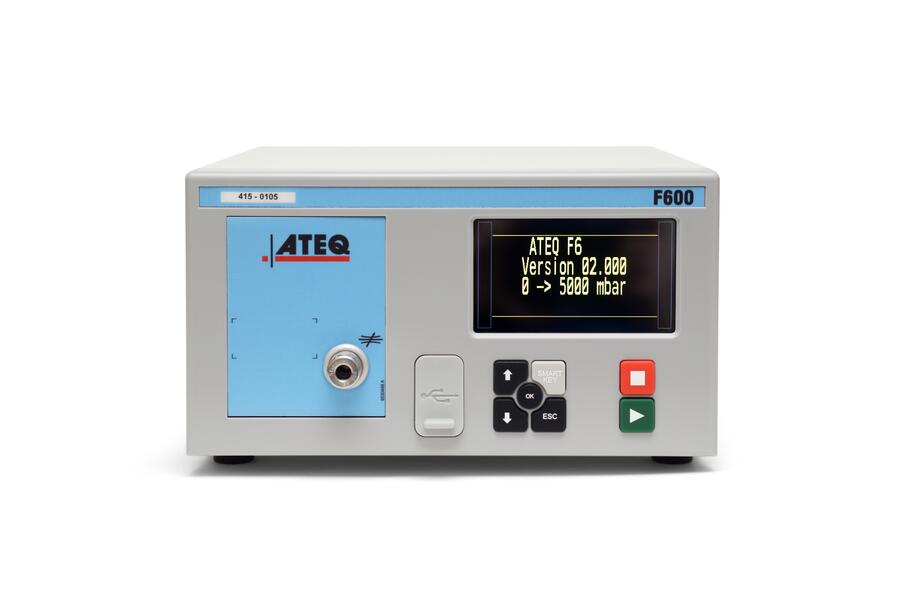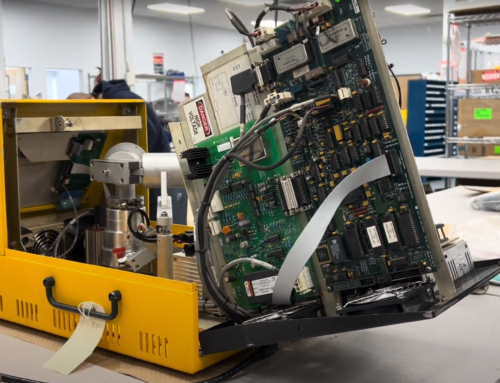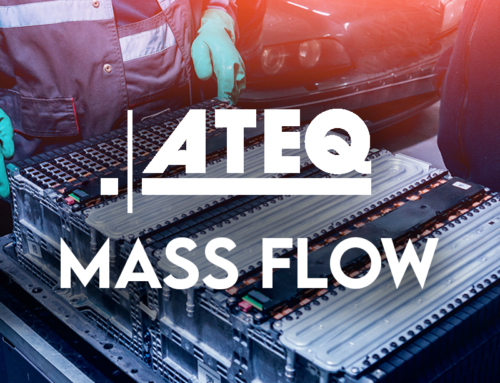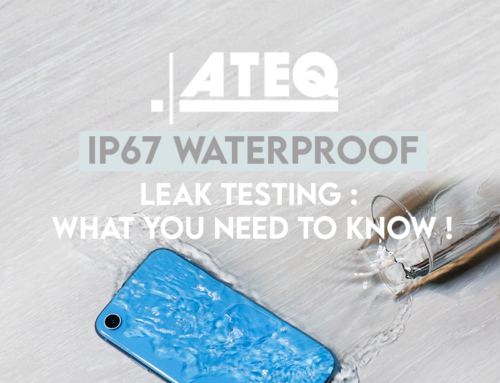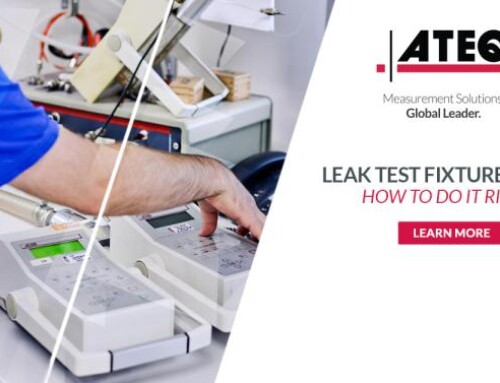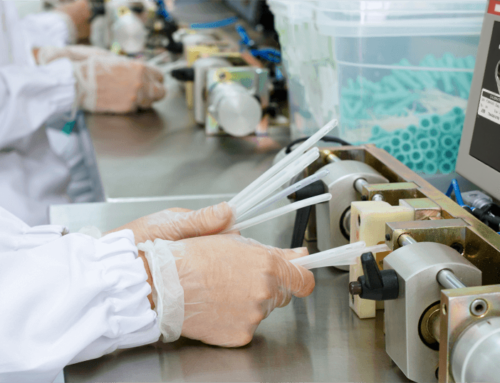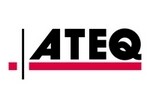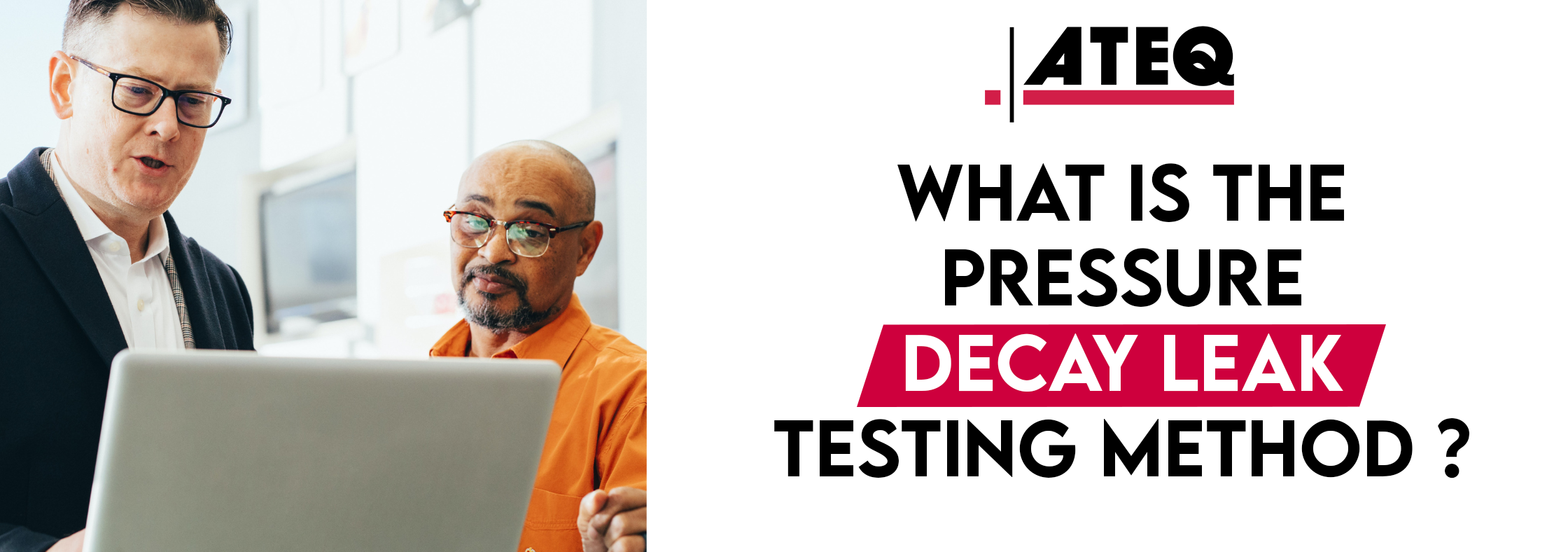
Pressure decay leak testing is the most widely used method of leak testing in manufacturing production lines. This is because, air pressure decay leak testing is uncomplicated, more affordable in comparison to other methods such as helium, and one of the easiest methods to automate.
How Does Pressure Decay Leak Testing Work?
A simple pressure decay leak test is performed by first filling a test part or component with pressurized air. Once the test part has been filled to a set amount of air pressure, the part is then valved off or isolated from the air supply. Once isolated, the part is then given a set amount of time to stabilize. Once stabilization has been reached, the pressure decay instruments transducer or sensor(s) measure any drop or loss in pressure during the test.
A drop in pressure is an indication that the part being tested has a leak. The difference in pressure between the initial measurement and final measurement of pressure will indicate the rate at which a part is leaking. If there is no change in pressure (decay) over the set amount of time, then the part does not have a leak.
Advantages of Pressure Decay Testing
Accurate: Pressure decay leak testing is very sensitive and accurate as it can detect even the smallest of leaks or physical breaches.
Diverse Applications: The pressure decay method of leak testing has numerous applications and can be utilized in various industries to test a wide array of parts/components.
Inexpensive: Because this method uses air it is less expensive when testing larger parts and in high-volume industries.
Versatile: The pressure decay method is versatile and can be adapted to testing environments that require positive pressure or negative pressure (vacuum) testing.
Pressure Decay Applications & Industries
There are numerous industries and applications where the pressure decay method could be utilized for effective leak testing. In this table, you will find a few typical applications and industries to give you an idea of how diverse pressure decay leak testing applications can be.
For more information on how to pressure decay leak test specific components click the individual application below or speak with an experienced ATEQ engineer who can help you to determine the best leak testing method for your specific needs here.
| Industry | Application |
|---|---|
| Consumer Electronics | Smartphones, Smartwatches, Speakers, Cameras, Drones, Sensors… |
| e-Mobility | Fuel Cells, Bipolar Plates, Battery, Mobile Engines… |
| Automotive | A/C Systems, Brake Systems, Cameras, Cylinders, Engines, Cooling Circuits, Gear Box… |
| Appliances | HVAC, Kitchen Range, Refrigerators, Faucets, Sensors, Coffee Makers, Cooling Coils… |
| Medical | Blister Packs, Blood Bags, Drip Chambers, Syringes, IV Bags, Endoscopes, Vials |
| Packaging | Plastic Bottles & Caps, Cosmetic Packaging, Food Packaging, Ink Cartridges, Medical Packaging |
The ATEQ Difference
Experience: With more than 50 years of leak testing experience and over 5000 customers around the world, we’ve seen and done it all, let us put our expertise to work for you.
State-of-the-Art Instruments: Due to our proprietary technology ATEQ instruments offer faster cycle times and the most sensitive sensors in the market. Making your production lines more efficient and your parts compliant with the strictest of quality regulations.
Global Network/ Local Service: Because we are a global company with offices in over 40 countries our experienced engineers can come on-site: to install, repair, troubleshoot, perform maintenance, and provide consultation /solutions for any leak-testing challenge you may encounter.
ATEQ Pressure Decay Leak Tester
Get Pressure Decay Leak Testing Training
Want to learn more about the pressure decay leak testing method and the process of integrating leak testing into your production line? Sign up for our leak testing academy where you will be trained by engineers with more than 20 years of experience in industrial leak testing.
Speak With a Leak Test Engineer Today!
If you would like to learn more about how ATEQ pressure decay instruments can meet your specific application needs, request a quote, or explore other leak and flow testing options contact an ATEQ Engineer click here or the button below.

